800-487-3808
800-487-3808

Heart health is more important for seniors than anyone else, protecting older adults from heart disease and helping them retain their mobility longer. That means making time each week for a regular cardio routine is crucial. If you’re looking for a few exercises to get started, take a look at our complete guide here.
From improving heart health to reducing stress and anxiety, there are countless benefits to incorporating cardio exercises into your regular fitness routine.
Increasing your heart rate exercises the heart, making it stronger, which can reduce the beats per minute needed to keep your body supplied with oxygen
Regular exercise helps burn calories over time, which adds up to reduced body fat and lower weight.
Exercise helps the body produce endorphins, the feel-good chemical that lifts your mood and reduces your stress levels. Learn more ways to reduce cortisol here.
Increased heart rate and blood flow provide nutrients to the brain and consistent exercise over time has been shown to improve memory and brain health
The majority of people report trouble sleeping as they age. Staying active has been shown to improve the quality of sleep and increase the overall hours of sleep.
If you’re going to get some exercise done, what better place to do it than the gym? Next time you’re at the gym, keep an eye out for any of these machines for a fast and effective cardio workout.
1. Marching
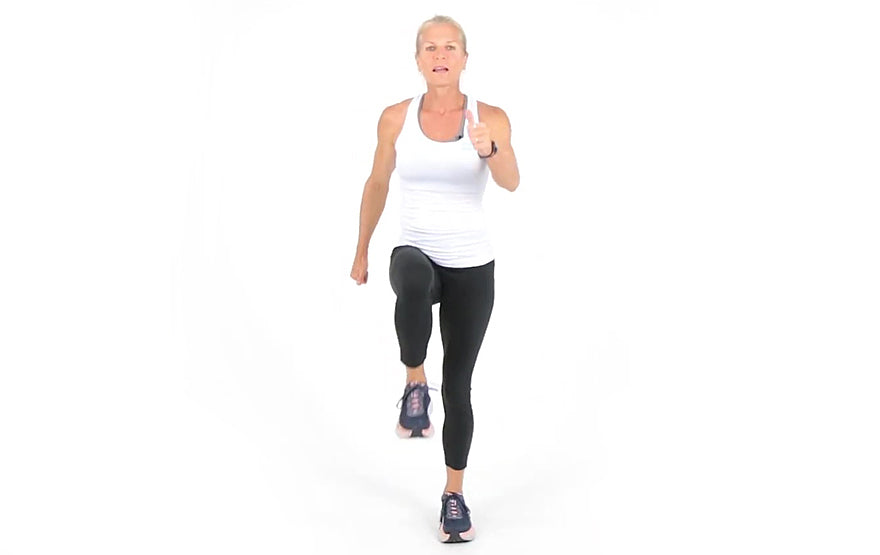
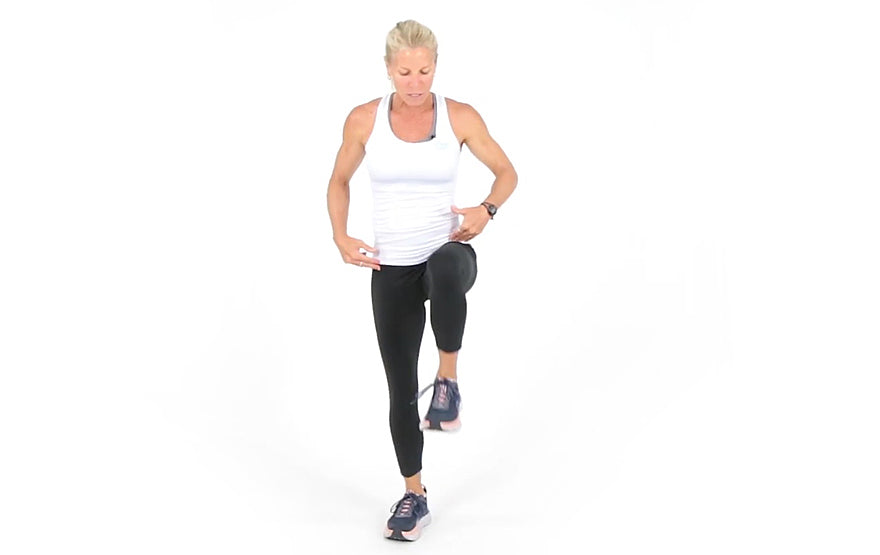
This simple exercise is something everyone can do and is a great way to warm up. Simply place your hands on your hips while standing, raise your knee to your waist, lower, and repeat with the opposite leg. Continue for one minute for a quick warm-up, or even longer to get your heart pumping.
2. Stair Mills

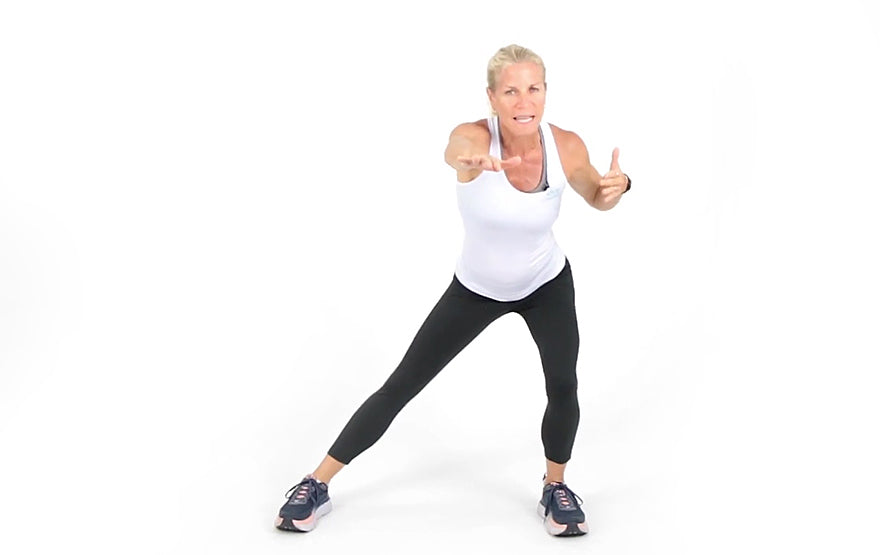
Put your feet wide, a little more than shoulder width apart with toes facing forward. Begin to lean from side to side, bending one knee at a time and adding a punch with your arms. You should feel this in your inner thighs and upper legs.
3. Butt-Kickers
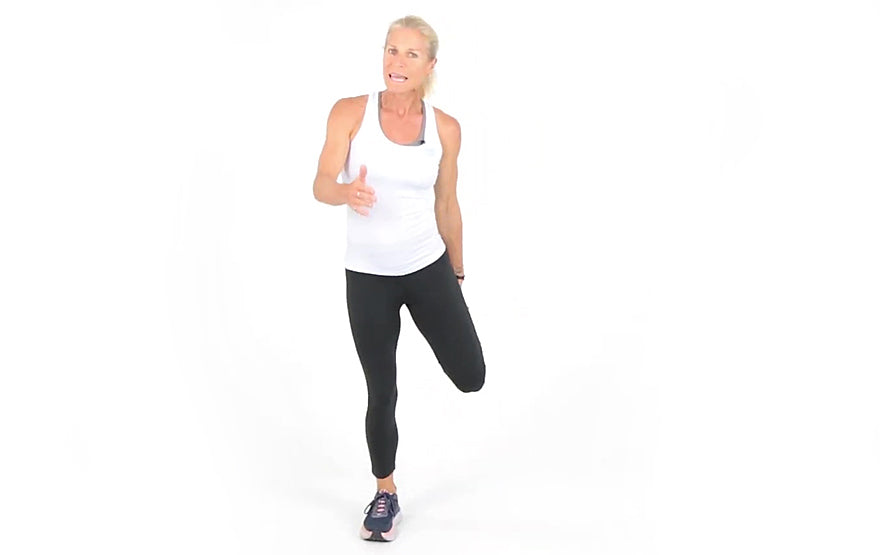
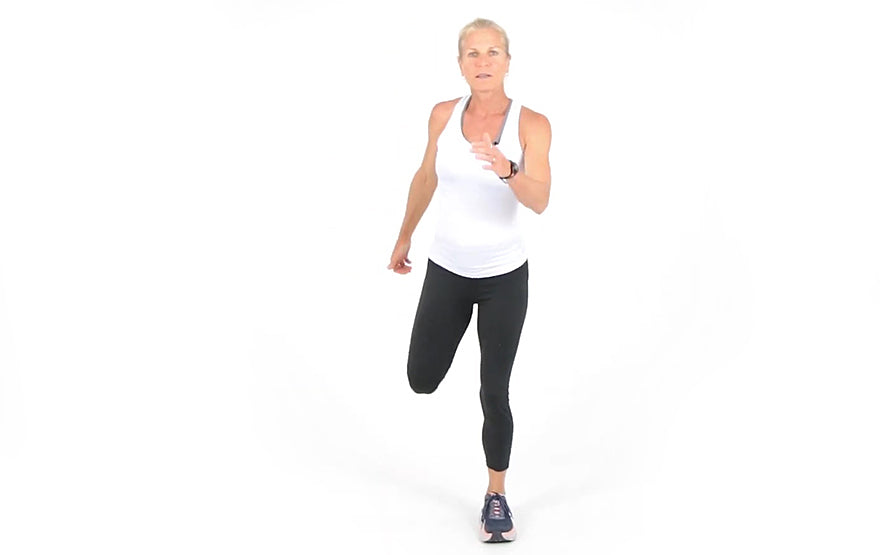
Start with your feet shoulder-width apart, and bend your leg backward, moving your heel toward your butt. Alternate legs and increase the pace for added intensity.
4. Jacob’s Ladder
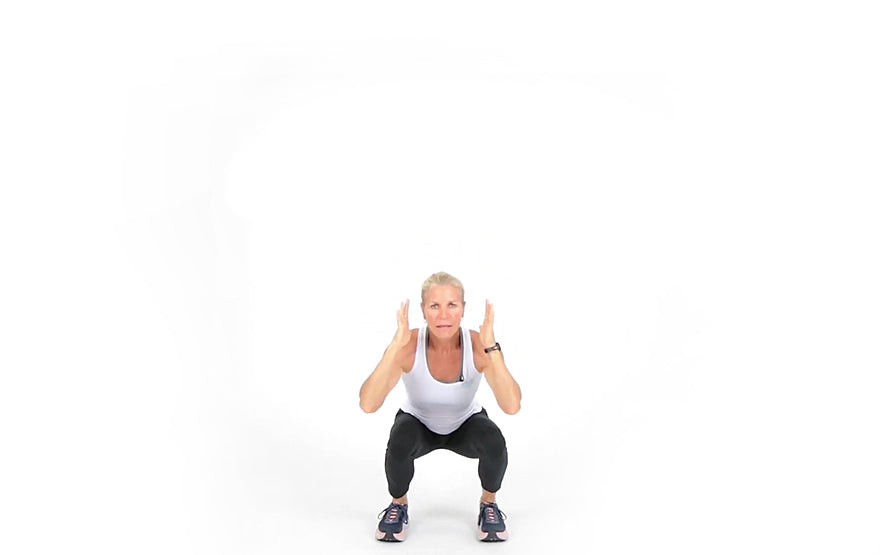
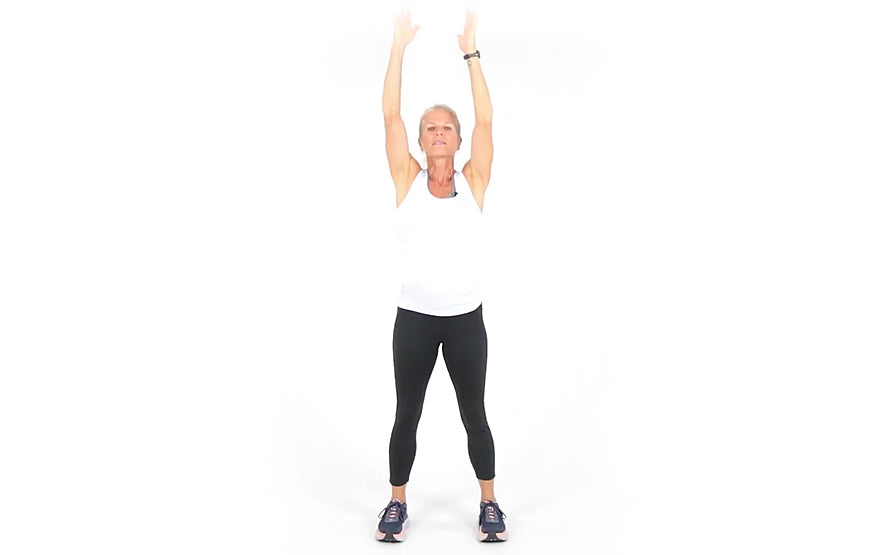
Begin with your feet shoulder-width apart and your toes pointing forward. You can keep your arms at your sides or bent in front of you. Slowly bend your legs to squat until your upper leg is parallel to the floor. Then slowly rise back to a standing position and repeat.
5. Side Steps
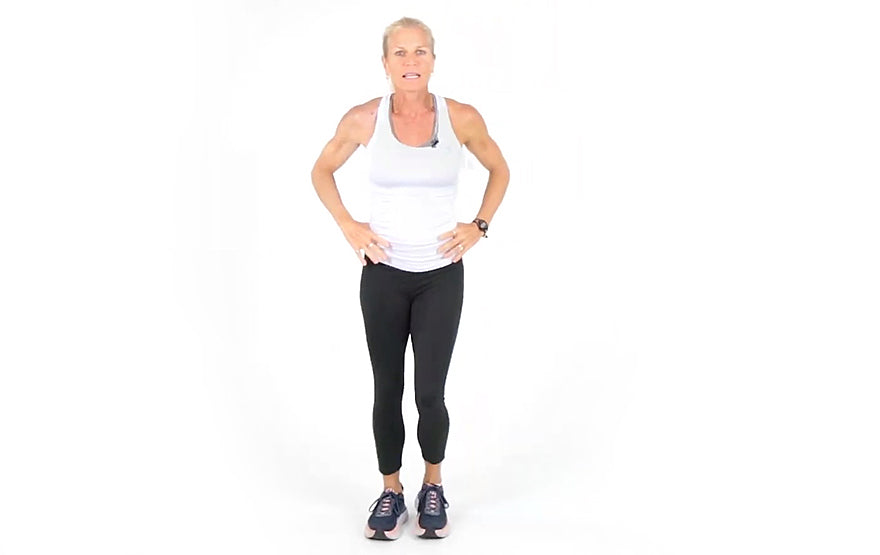
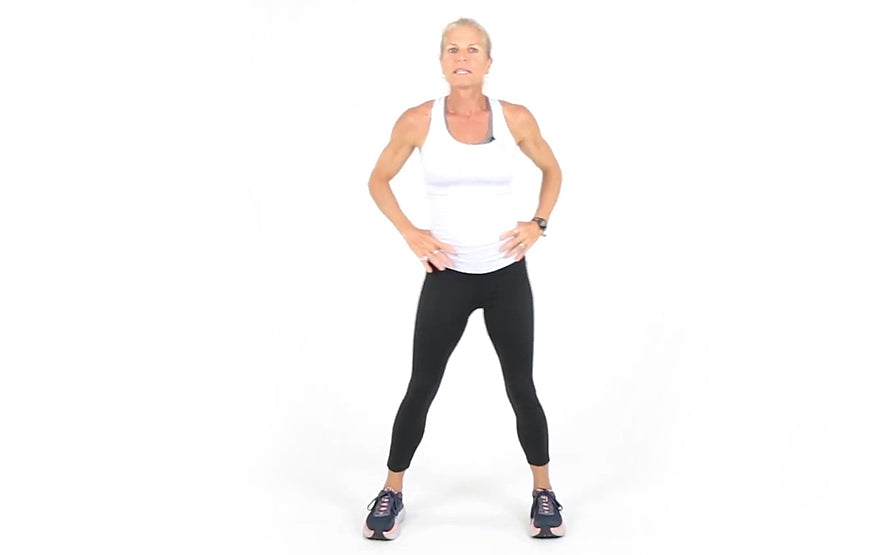
Make sure you have plenty of space on each side for this cardio exercise before you start. Begin with a slight squat, your legs bent just under 45 degrees. Then, reach your right leg out to the side, shuffle to the right, and bring your left leg over to meet its partner. Take another step to the right, and then repeat the process going in the opposite direction. You can move faster or squat more deeply to increase the intensity.
6. Toe Taps
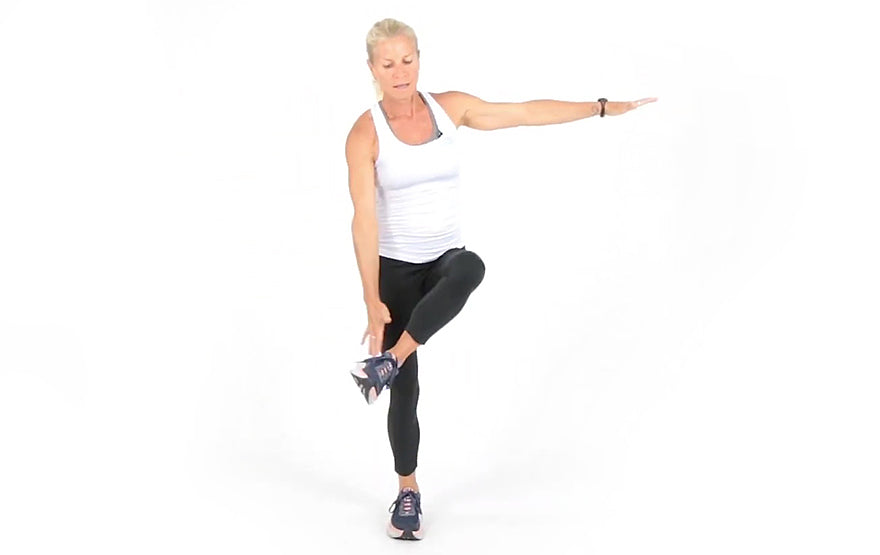

Start by standing tall with your feet shoulder-width apart. Then, move your right foot forward, cross it to the other side of your opposite leg, and tap the floor with your toe. Then return to your original position and repeat with the other leg.
7. Heel Taps

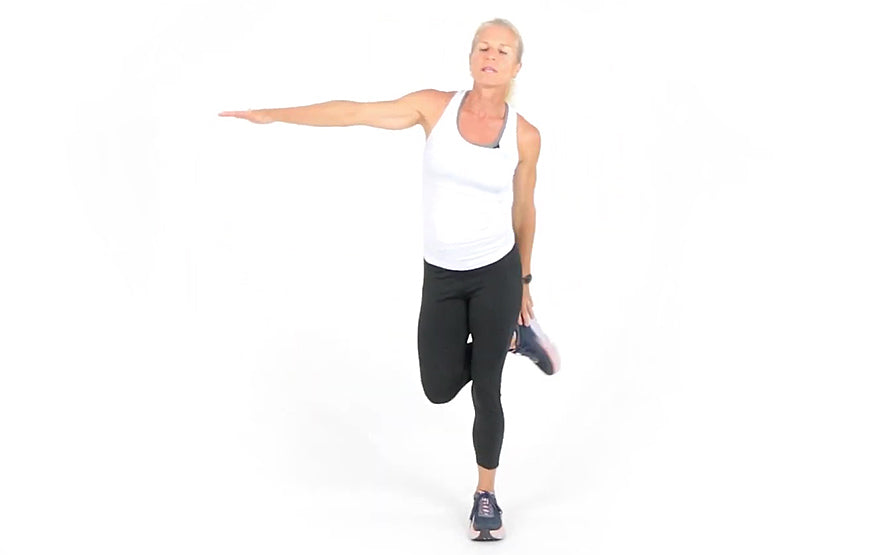
Here’s another exercise you can try on a step. Rather than facing the step, stand with your right side facing it, leaving one foot on the step and one hanging off the side. Start by bending your right leg until the heel of your left foot touches the ground, and return to the starting position. For the opposite leg, face the opposite direction and repeat the process.
8. Knee Raises
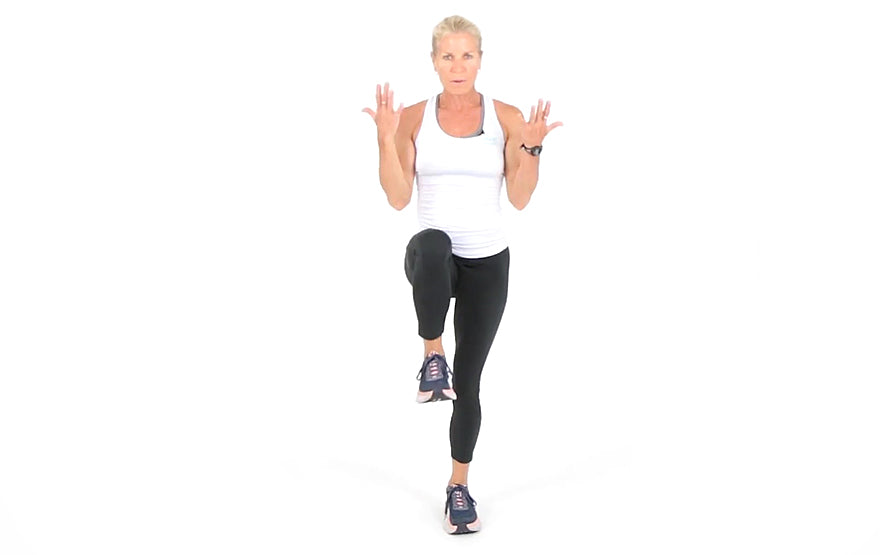
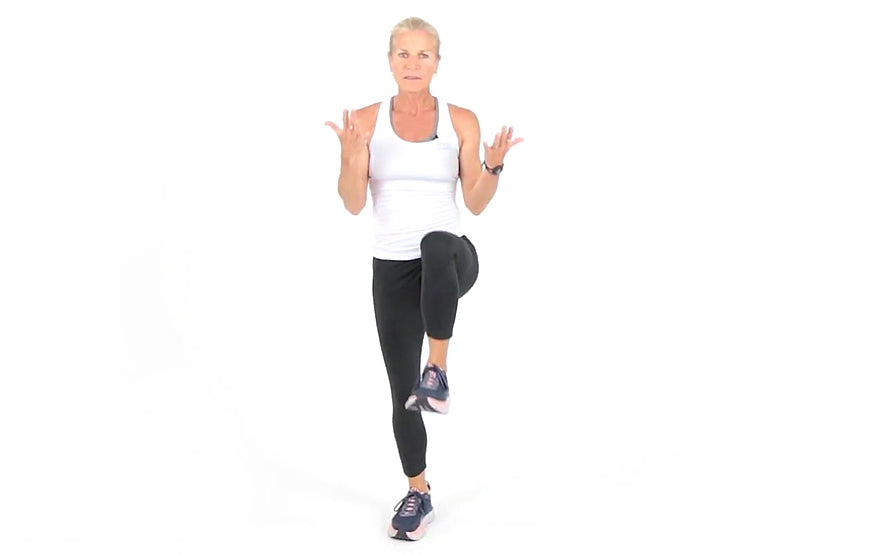
This is a more gentle variation of marches you can try to ease yourself into a cardio workout. Rather than lifting your knee to waist height, raise it only halfway until your leg is at a 45-degree angle to the floor. Hold for two to three seconds, and then lower it to the starting position. Do ten reps for each leg.
9. Shoulder Raises
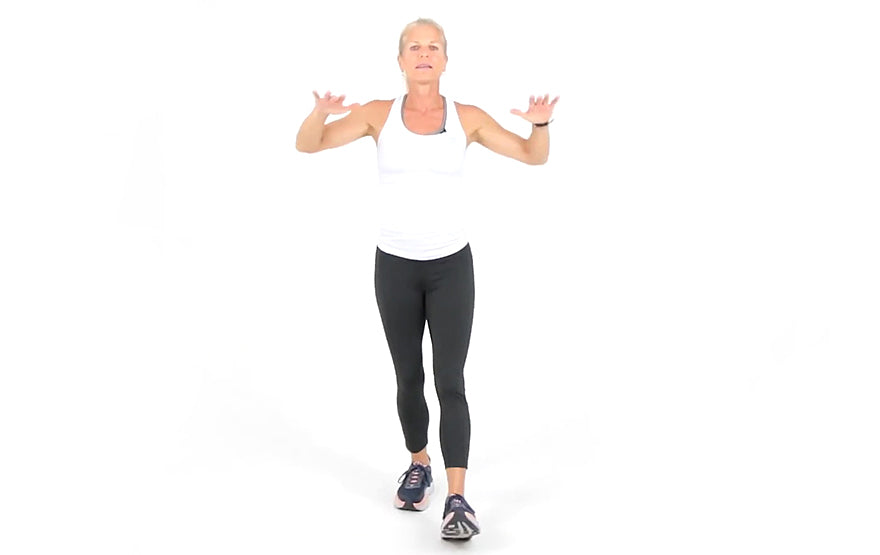
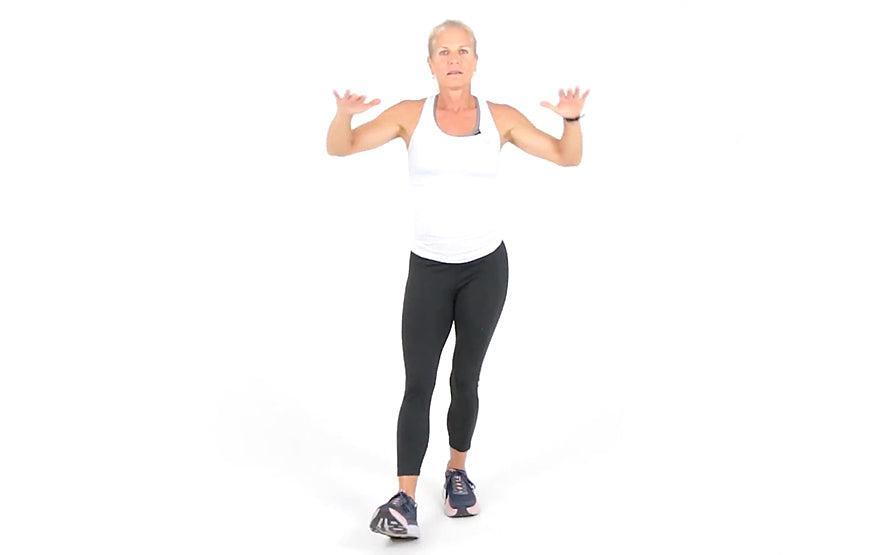
This is an exercise that can be tried with hand weights for an extra challenge or without for a more gentle workout. Start with your arms at your sides, standing tall. Then, simply raise your arms to each side until they are stretched straight to either side. Then lower them back to the starting position and begin the process again.
10. V-Step
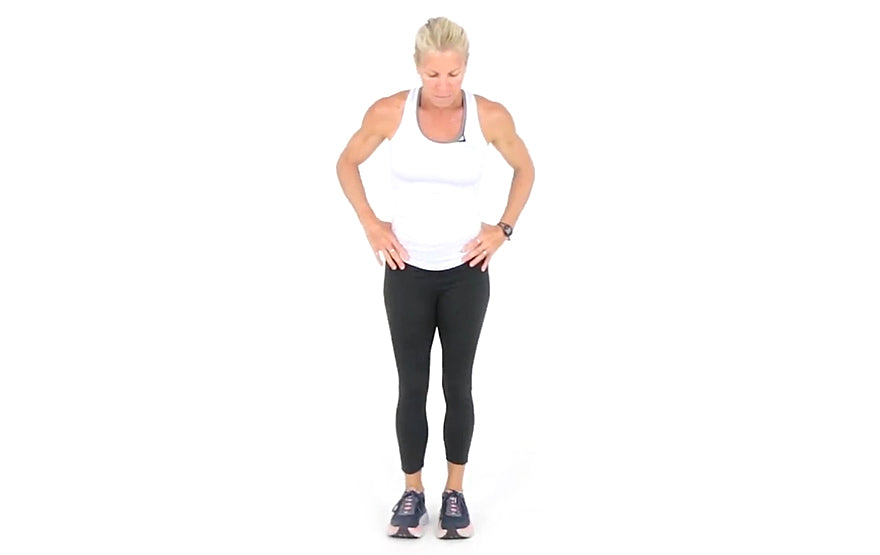

Pull out your aerobics step for this exercise and start by facing it about eight inches away from the base. Begin by stepping up, reaching your foot to the side of the step. Raise your body, place your left foot on the other side of the step, and then return to the starting position.
11. High-Knees

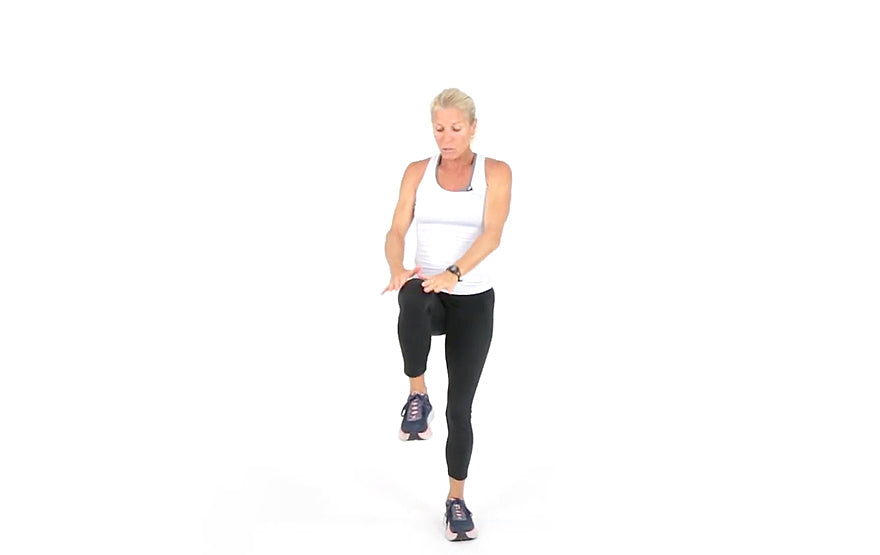
This one’s a bit like marches but with added intensity. Rather than simply lifting your leg to your waist, raise it to your chest or as high as you can. Lower and repeat with the other leg. This will provide a good cardio workout as well as stretch your hamstrings.
12. Hip Rolls
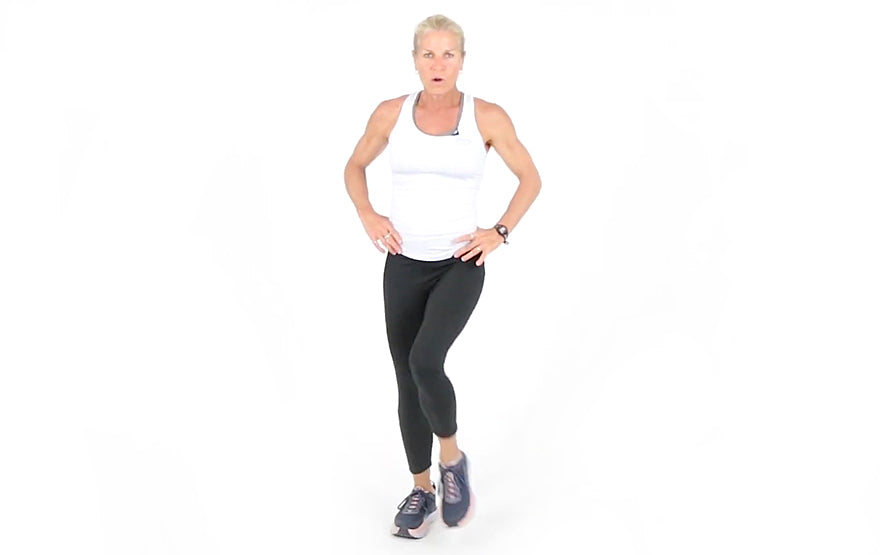

Stand with your feet facing forward and hands on your hips. Balance on one leg and alternate bringing each leg up 90 degrees and rotating clockwise out to the side of your body; moving your legs in a big circular motion. Repeat pn both sides moving your legs counterclockwise direction.
13. Arm Circles
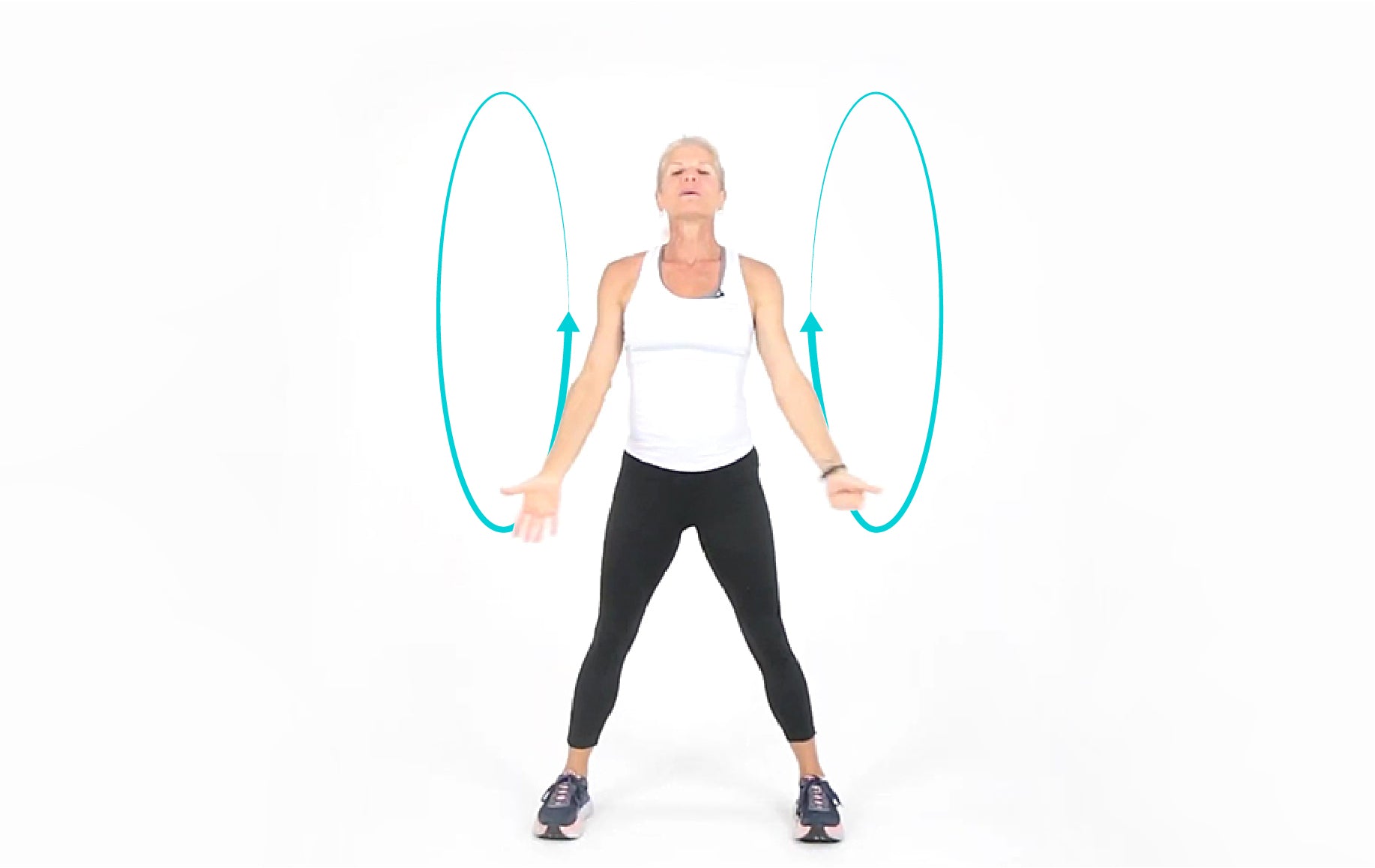
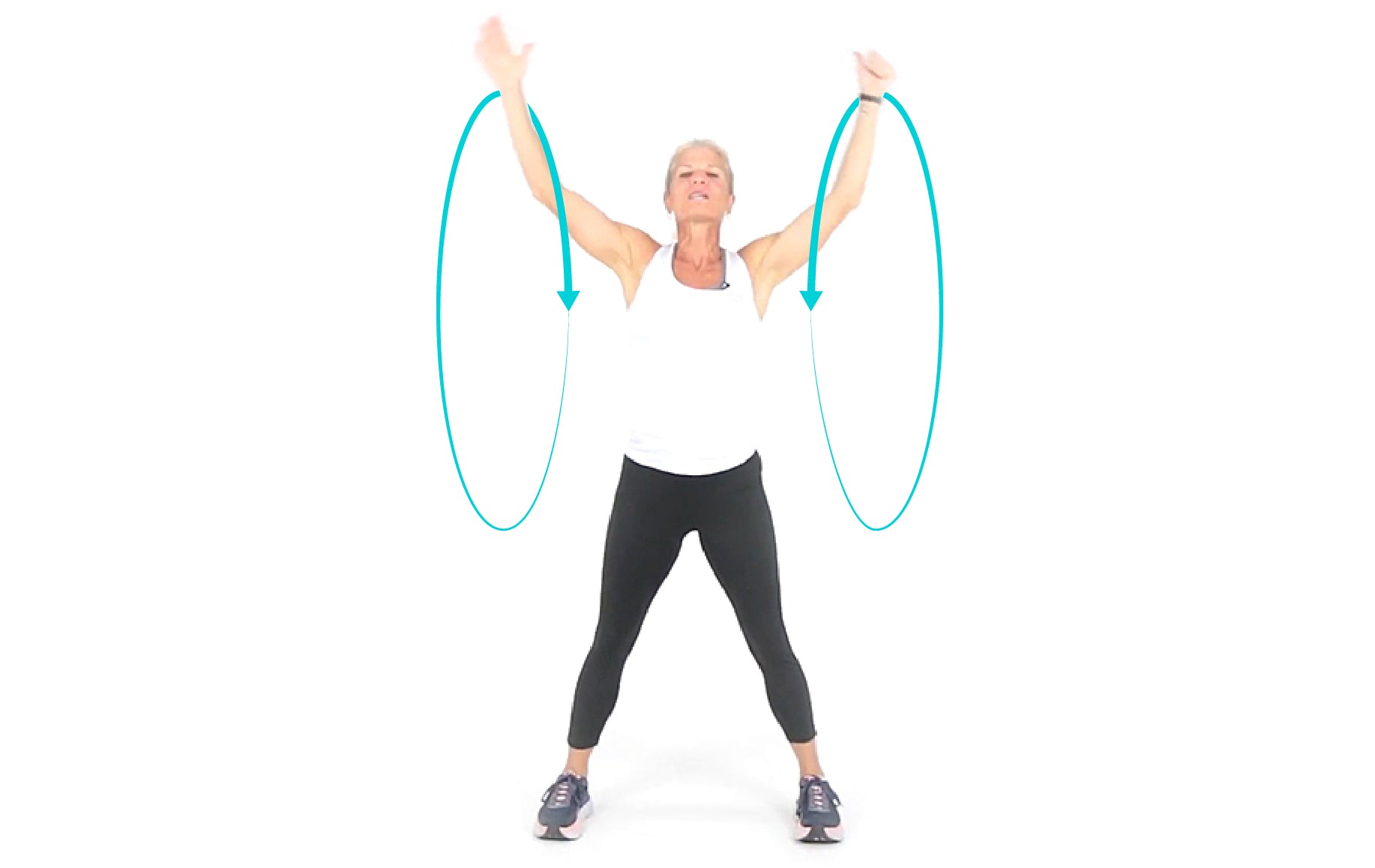
Hold your arms out to the sides and begin drawing small circles with your hand to the left and right. Move slowly at first, moving in small circles, and then gradually widening the width of the circle for a full shoulder workout. Make sure not to move too quickly to avoid injury.
14. Grape Vine
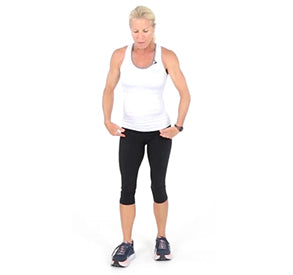


Grape vines take some space to the left and right, so make sure you have plenty of space before starting. Take your right leg, cross it behind your left leg, and over to the other side. Then, take a step with your left leg to the left. Repeat this process once or twice if you have the room, and then reverse direction.
15. Low Kicks
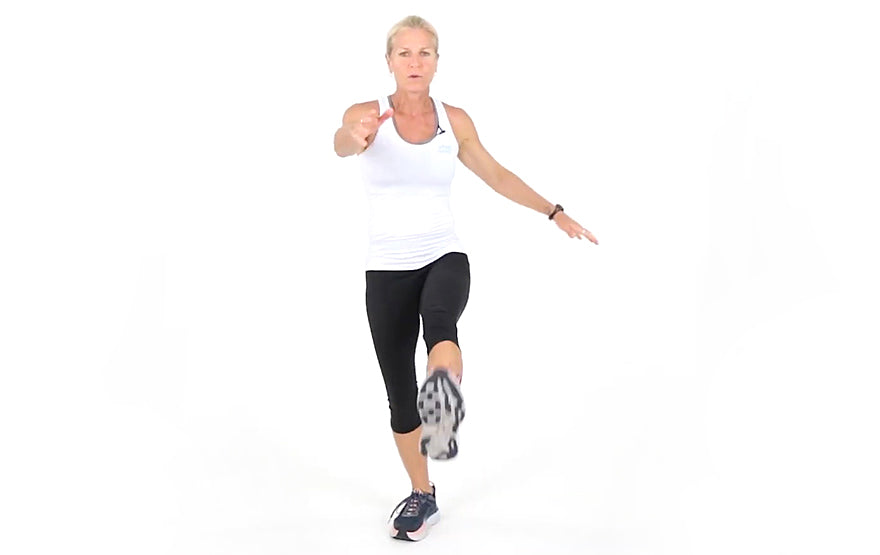
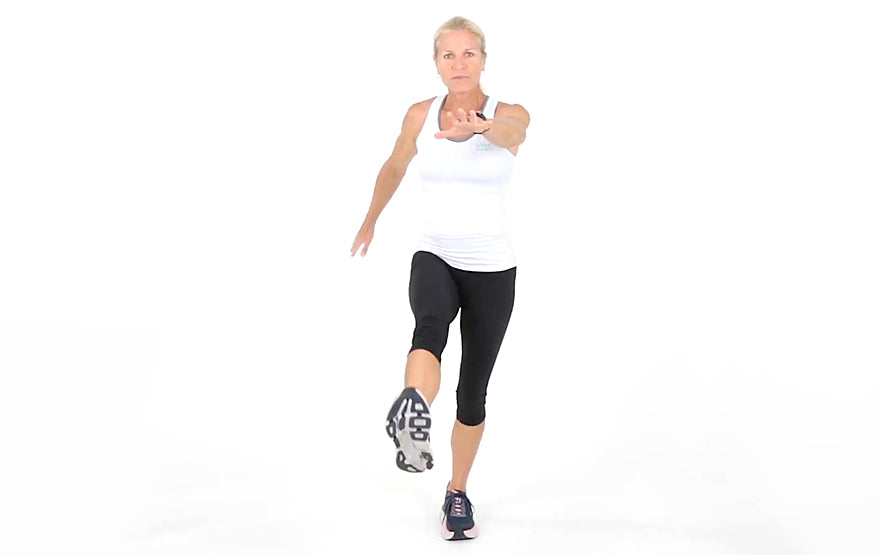
Begin with your shoulders back and your feet shoulder-width apart. Then, raise your foot waist-high by kicking your leg forward while keeping it straight. Make sure to keep your core tight throughout the motion. Then return to the starting position and switch to the opposite leg.
16. Lat Squeezes
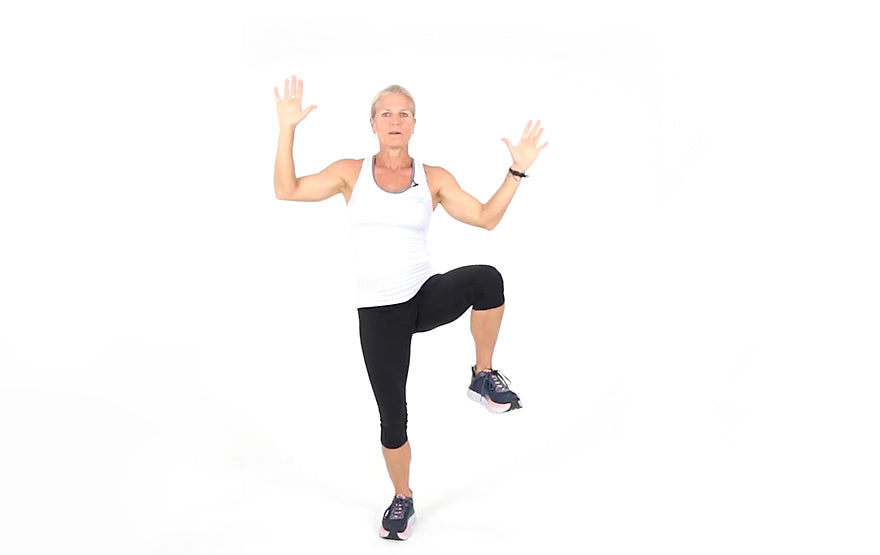
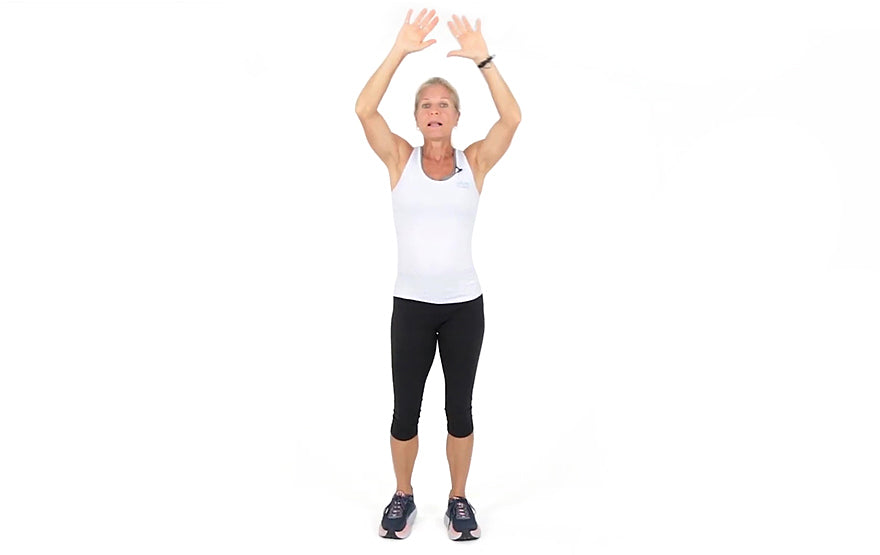
Start by bending both arms at the elbow so each forearm extends ninety degrees from your body, pointing to your left and right. Then, draw your shoulders back and together, squeezing your spine with your shoulder blades. Return to the starting position and repeat. For an added balance challenge, lift one leg to outside as you squeeze your lats.
17. Squat to Calf Raise
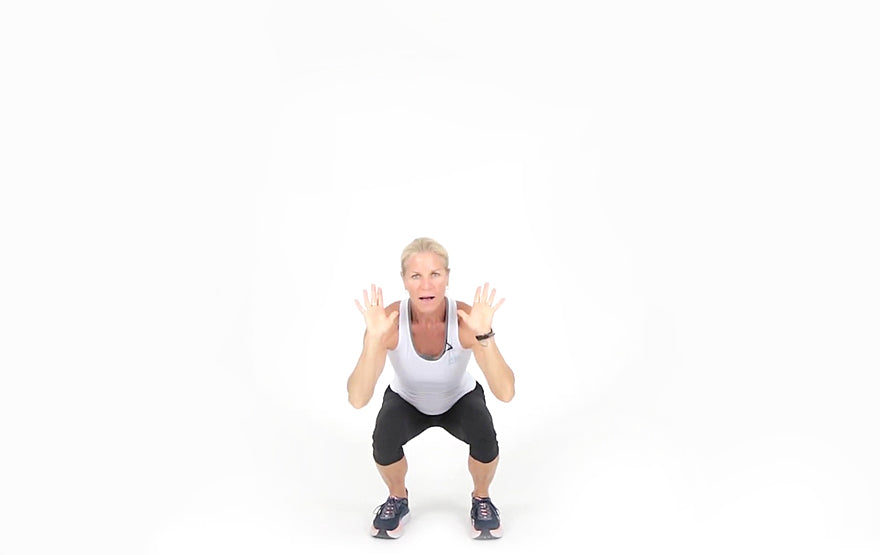
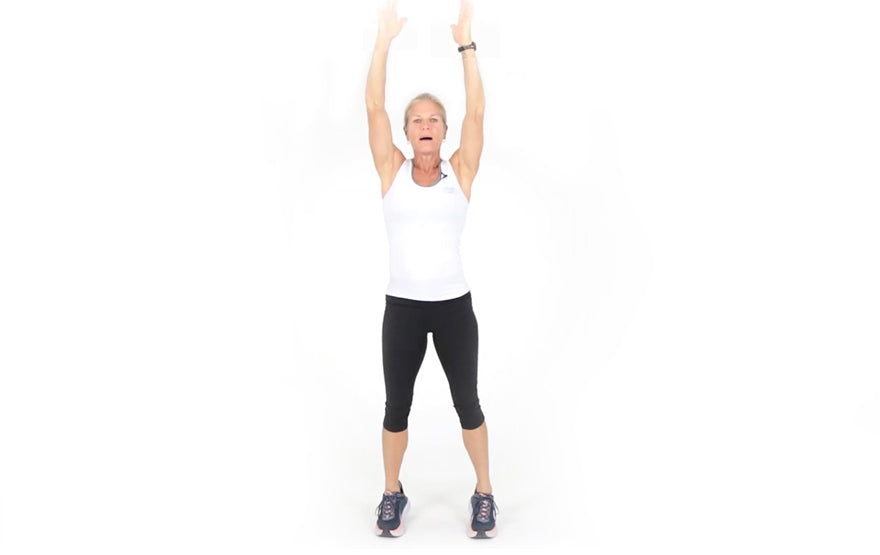
This exercise combines two exercises, making it a great way to work a range of different muscle groups. Start standing tall with your feet shoulder-width apart, then bend your knees until your upper legs are parallel to the floor. Finally, slowly stand back up and continue the motion by raising your leg to chest height. Alternate between your right or left leg.
18. Curtsie Lunge
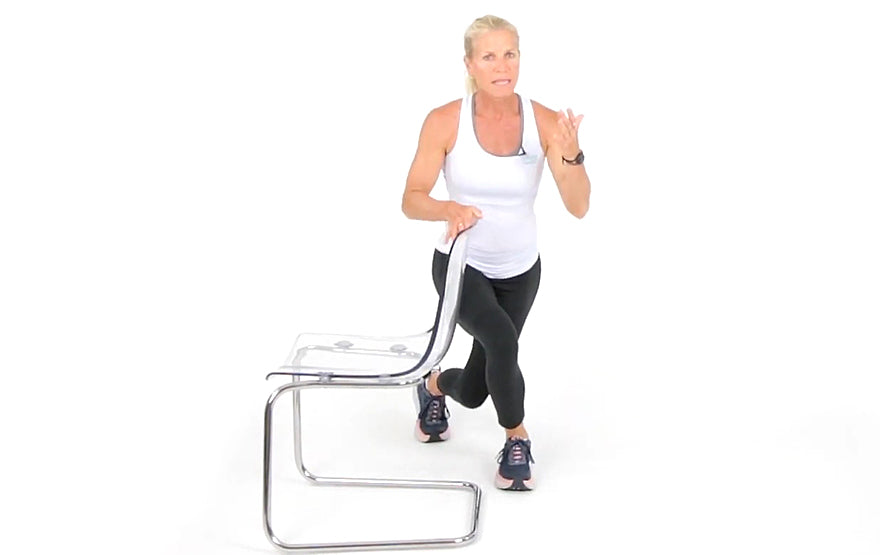
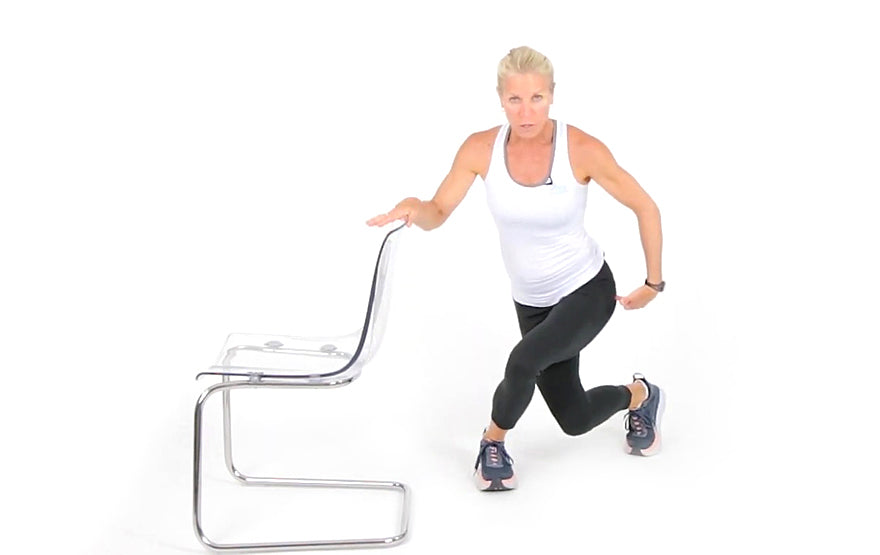
Start with your feet shoulder-width apart and begin by crossing your right leg behind and to the left of your left foot. Place your right toe firmly on the ground and lower your right knee slowly until it almost touches the ground. Then repeat the process with your opposite foot. You can increase or decrease the difficulty depending on how low you bring your knee.
19. Speed Skater


This unique exercise combines the movements with a standard lunch with the grapevine exercise described above. Begin by bending both knees and then reaching your right leg diagonally behind and to the left of your left foot. Bend your right arm and straighten your left arm. Then return to the starting position and repeat the motion with your opposite leg. You can increase or decrease the difficulty of the exercise based on how far you reach your rear leg.
20. Reverse Lunge-Kee Raise
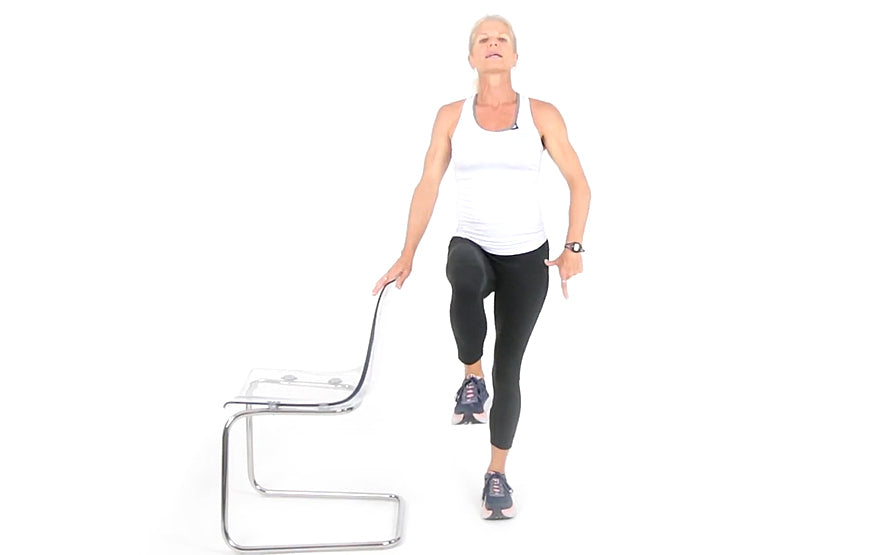

This exercise combines a backward lunge with a knee rise, making for a fluid exercise that works a variety of muscle groups. Start by standing tall, and then reach your right leg behind you and rest your weight on your toe. Bend your knee slowly, and then raise it back up again. Finally, return to the starting position and continue the motion by raising your leg to chest height. Repeat with the opposite leg and alternate between the two.
21. Standing Side Crunch
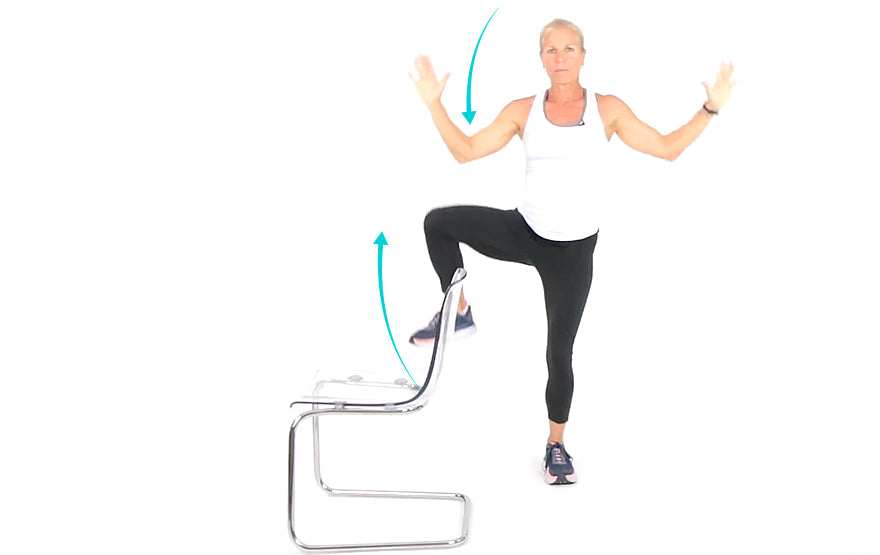
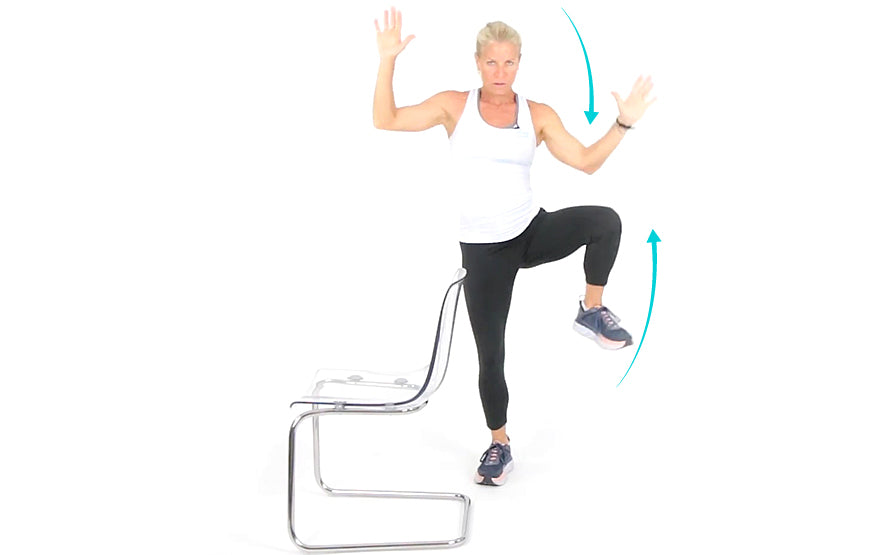
This is the perfect exercise for working those core muscles! Start by placing your feet shoulder-width apart and keeping your hands o n the back of your head. Now, bend to your right while lifting your knee until the tip of your elbow meets your kneecap. Then return to the starting position and repeat with the opposite side.
22. Step Ups
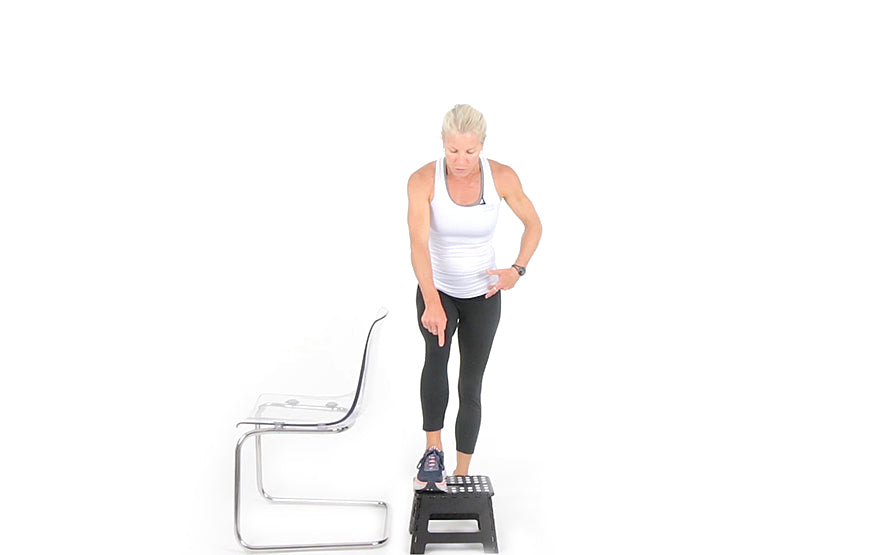
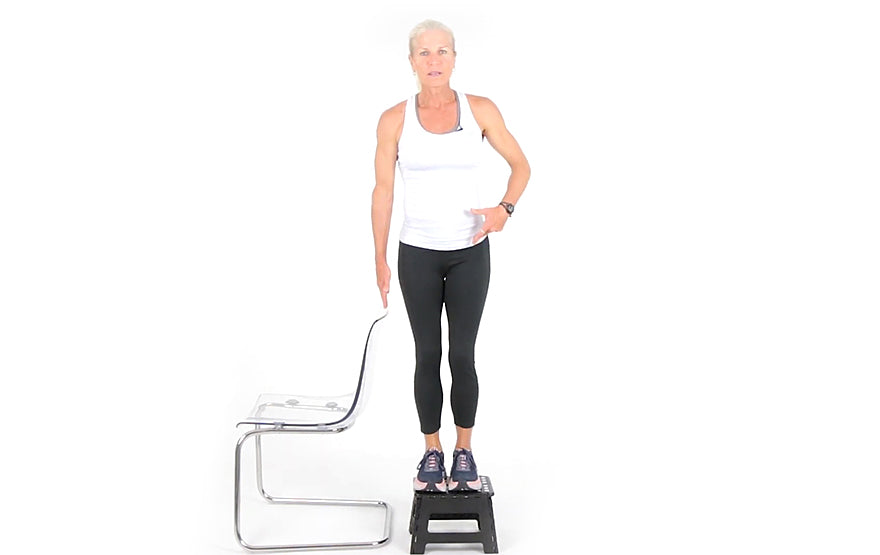
This low-impact exercise is easy enough for anyone to do. You can use an adjustable aerobics step or just the bottom step of any staircase. Start by standing with your toes about eight inches away from the base of the step. Then lift your foot and rest your toe on the edge of the step. Return to the original position and repeat with your other foot.
23. Lateral Step-Ups
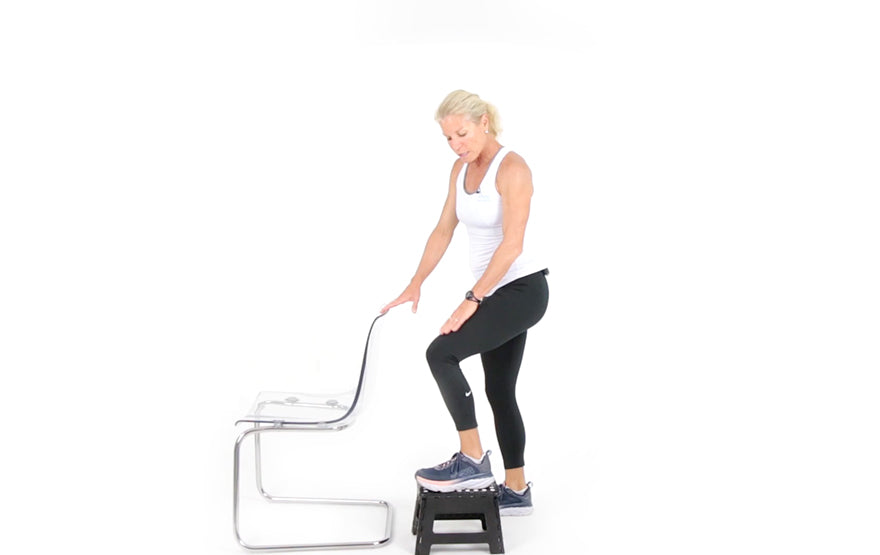

This exercise works just like the standard step-up, except instead of facing the step, you’re turned 90 degrees to the right. Lift your right leg to step up, straighten your knee, and then lower yourself back down. Repeat this several times and then switch to the opposite foot.
Stationary cardio is any cardiovascular exercise consisting of repetitive motions performed while remaining in a stationary position, typically using equipment such as an elliptical or rowing machine, a stationary bike, or a treadmill.
Stationary cardio can be a great way to get your heart pumping, but it’s not for everyone. Take a look at some of the main pros and cons here:
Pros:
Cons:
Shop for At-Home Workout Gear Here
If you want to try stationary cardio for yourself, starting with the right piece of equipment is essential. Learn more about each of these and decide which is the right choice for you.
Find the Best Stationary Cardio Machine for You
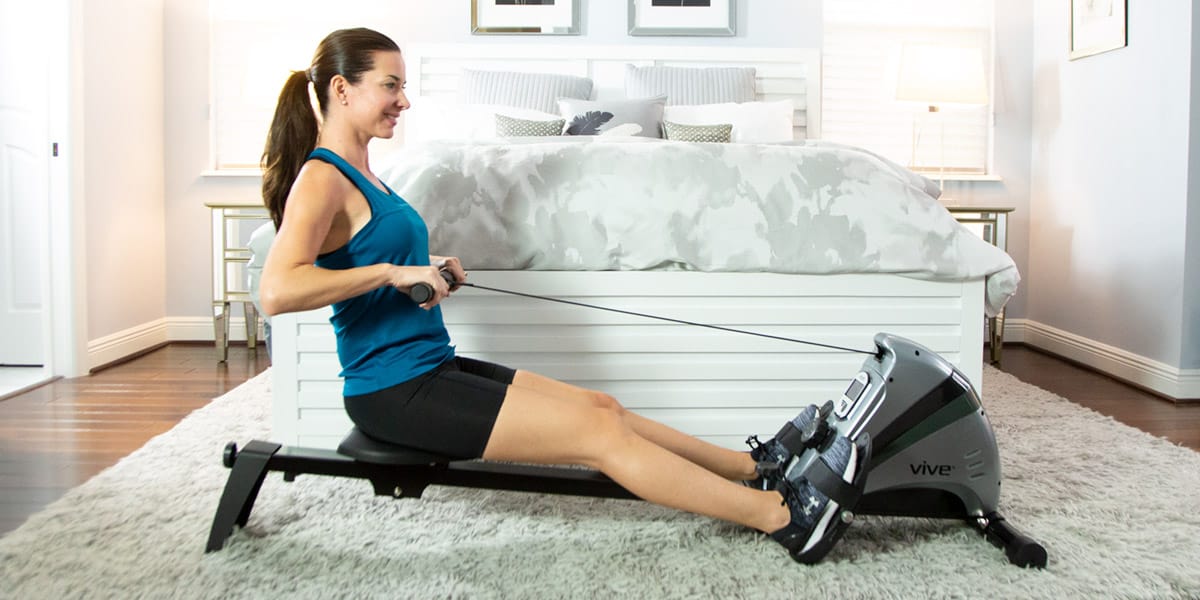
A rowing machine is a perfect way to exercise your upper body with a relatively slim piece of equipment. Most of them include grippable bars that are pulled backward in a rowing motion. The best models let you customize the resistance for higher or lower difficulty.
Elliptical machines work your upper and lower body simultaneously, making for a more comprehensive workout. They include pedals and bars, which let you keep your arms and legs working constantly. While they don’t take up quite as much space as a treadmill, they are generally bulkier than a rowing machine.
A treadmill may be one of the bulkier pieces of exercise equipment out there, but it’s a great way to get in a jog in any weather. You can set speed and resistance to customize your run and keep track of time and calories burned.
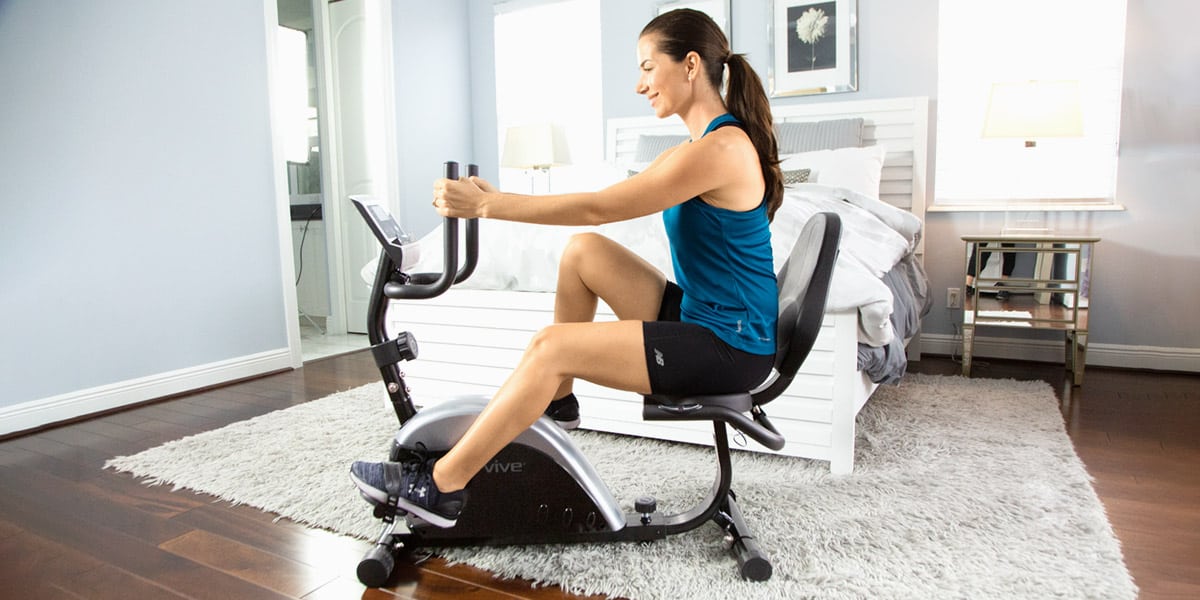
A recumbent bike is an excellent choice for seniors as it lets them get in an intense cardio workout without all the stress on their joints. An adjustable and comfortable seat can help keep you comfortable and prevent injury while you keep your heart pumping.
Don't have the space for a large machine? Consider a pedal exerciser; the compact version of a recumbent bike that offers portability, easy storage, and a great workout.
Cardio workouts don’t always mean hitting the gym or following along with a trainer. There are other creative ways that you can mix it up.
Performing household chores can also provide you with cardiovascular benefits. Tasks such as vacuuming, sweeping, gardening, painting walls, window washing, cleaning out the attic/garage, shoveling, using a push mower, doing renovations, and getting groceries.
Find out what others are asking about cardio for seniors.
Ideally, adults 65 years or older should aim to get 150 minutes a week of moderate-intensity cardio exercise. This equates to about 30 minutes a day, 5 days a week.
Older adults need to take care while exercising, as they are more prone to muscle strain and overuse injuries. For this reason, avoid high-impact exercises or those that are overly strenuous. Stick with smooth, gentle motions rather than fast and jerky ones. Avoid holding your breath.
In addition to cardio workouts, there are other types of exercises seniors can try for full-body health. Strength and balance exercises like yoga, pilates, and tai chi are good options. Resistance training is a good way to build muscle without overstraining yourself, as long as you have a good set of exercise bands.
For results with any exercise regimen, it’s important to set yourself up for success. Here are some tips to follow when getting started.
Before following any guidelines, always check with your doctor. The Academy of Sports Medicine recommends the following guidelines when it comes to exercise:
Resistance training 2-3 times per week
It’s always a good idea to give your muscles a chance to warm up before working out and cool down afterward. Make sure to stretch gently before or after to avoid muscle strain.
There’s nothing wrong with an intense workout, but don’t forget to start slowly. Rather than jumping right into your most strenuous exercises, start with easier ones and gradually build up.
The key to an effective workout is keeping your motivation up, so it makes sense to pick a workout routine you enjoy. If you’re just starting, try a few different types of exercise to see what sticks.
Not everyone needs a personal trainer, but if you want to focus on working on your form, it might be a good idea. A qualified trainer can help keep your motivation up and tailor a routine that fits your body’s needs.
If you’re not careful, improper exercise habits can do more harm than good. The most important thing to keep in mind is to stay hydrated. This will keep your body working smoothly, and ready to sweat!
Especially if you’re starting, it can be easy to overwhelm yourself with too much exercise. Instead, try to set achievable goals and continue to raise the bar as you progress.
It’s always better to exercise with others. Not only does it make it more fun, but you’re more inclined to continue exercising to meet up with your exercise buddies again.
While cardio is typically regarded as an intense, rigorous method of exercise, there are ways that seniors can get active without doing damage. From getting out and about to simple routines at home, there’s plenty to choose from. We hope you found this list useful in your quest to get healthier!
Leave a comment